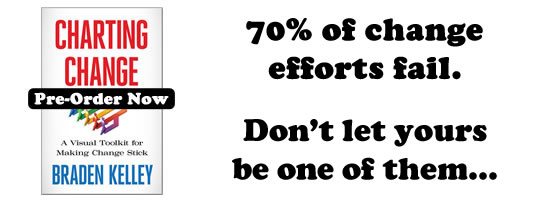Disrupting 21st Century Corporate Learning
 Having been in the corporate learning and development space now for more than 25 years, it’s been really useful to invest time immersing myself in researching recent developments and emerging trends. It seems that a “new world of work†is emerging in the 21st century disrupting the corporate learning paradigm. It’s turning old instructional, episodic & live training models upside down, as technology, financial, people and competitive pressures drive necessary change and introduces new possibilities for achieving 21st century corporate success, growth and sustainability.
Having been in the corporate learning and development space now for more than 25 years, it’s been really useful to invest time immersing myself in researching recent developments and emerging trends. It seems that a “new world of work†is emerging in the 21st century disrupting the corporate learning paradigm. It’s turning old instructional, episodic & live training models upside down, as technology, financial, people and competitive pressures drive necessary change and introduces new possibilities for achieving 21st century corporate success, growth and sustainability.
Our research indicates that business enterprises globally have the opportunity to meet the needs of the modern learner by responding strategically, and speedily to the diverse and complex range of trends impacting corporate learning.
These include four key trends;
- Time scarcity; having less time to spend absorbing more knowledge and skills to complete more complex tasks faster.
- The war for attention; being distracted and often overwhelmed by a profusion of electronic and online devices available 24/7.
- Focus on the bottom line; securing ROI in uncertain and unstable times, questioning whether learning a short term cost or a longer term investment and lever for future competitiveness?
- Focusing the learning content and process mix; applying design thinking processes to empathize with modern learners to create contextualized experiences.
- Maximizing the use of technology and creating customized blended solutions; integrating broad range of technologies with other digital, interactive and on the job learning experiential methodologies.
So what is really going on?
In their recent industry report – “Ten Trends Shaping Corporate Learningâ€, Deloitte disclose that
- Learning and development spending has grown in double digits for four years in a row.
- Leadership development spending grew by 14% in 2014, the highest growth in a decade.
- Learning technology spending grew by 21% in 2014, representing a major“technology replacement cycle beginning.
- More than $6.4 billion of financing invested in education and training companies in 2015 (up from $3.5billion in 2011).
They also highlighted that today only 16% of Learning and Development spending is allocated to instructor delivery vs. 21% in 2011 and 33% in 2006.
There is also a huge shift in content strategy, which is shifting resources away from instructor lead training towards online and on the job learning where in 2015;
- 32% of training was instructor led and is shrinking,
- 13% was virtual instructor led,
- 26% was online self study and is finally working,
- 15% on the job and 13% through collaboration which are also rapidly growing areas.
These trends and this data suggest that we are at a tipping point!
Reinforcing the critical importance of a corporation becoming, what Peter Senge termed the Learning Organization; an organization skilled at creating, acquiring, and transferring knowledge, and at modifying its behavior to reflect new knowledge and insights.
This is the real lever for unleashing and harnessing people’s potential and collective genius by strategically and systemically applying new agile learning strategies and technologies as enablers for business growth, competitiveness and sustainability.
Interestingly, the confluence of the five trends disrupting the conventional corporate learning paradigm is also seeing the emergence of very cost effective learning platforms, promising to be “the solution†yet, when tested, are mostly still at the minimal viable product stage.
And, here’s the point;  if innovation is one of the key competitive strategies in today’s corporate environment, and if one of the key critical success factors for corporate success is to focus on creating value through change, then corporations have the opportunity to use a “both (technology)/and (people)†approach.
To strategically and systematically use innovation processes to see (discover) problems and opportunities, create ideas (design) and then execute (deliver) innovative learning solutions that people love and cherish.Â
Doing this strategically, systemically and effectively will unlock, mobilize and harness people’s collective genius, and empower people and teams to successfully drive and deliver the changes that result in breakthrough innovation.
This suggests that corporations can choose to enhance their internal capability and shift towards;
- Empowering and enabling people and teams to become “agile learners†bringing content specific and experiential learning processes into daily working operations to encourage peer, and team learning and development that they own and control.
- Fuel, empower and mobilize every link of the corporate value chain through online connectivity to empathize with users problems and create learning communities who use technology to network across boundaries, functions and geographies to solve them.
- De-content and contextualize core leadership, management and other key learning programs to diffuse knowledge and solve multi faceted problems in practical, quick and simple ways incorporating on the job learning methodologies.
Yet, historically, the majority of corporate learning programs seem to have not progressed much further from the “classroom†and academic disciplined approaches that have little relationship to the real world. In that have often been subject and event based, and run in isolation to the business enterprises’ mission, strategic intent and delivery of goals and/or concrete outcomes.
What are the possibilities, opportunities and methodologies?
The ultimate and most impactful corporate learning solution will embody a contextualized blend and combination of the most relevant content, delivery options and experiential choices outlined below;
- Facilitative and coaching processes, more mentoring and on the job apprenticeships.
- Bite sized learning solutions delivered through a range of accessible technologies.
- Mobile learning solutions that drive mindset and behavior change as well as skills development, integration and measurement.
- Virtual and live simulations of real life experiences using online game methodologies.
- Gamification built into all online learning methodologies aligned to demographic styles.
- Using social media to assess and predict personality types and learning styles.
- Small wearable computers that record physiological state to self manage and regulate emotional and reactive responses to complex problems and difficult situations.
Taking the first steps
At ImagineNation™ we believe that corporations who commit to meeting the needs of the modern learner requires strategic, systemic and agile responses to the diverse and complex range of trends potentially impacting corporate learning’s’ ability to enable the delivery of the business strategy.
- Defining your goal for change; research and empathize with your value chain, agree from what to what and make it measurable, be convinced of the role and importance of change and learning, role model it relentlessly.
- Understand your core culture; know and identify the key drivers and messages about the way things are being done, explore how these can inhibit or support the desired change, commit to reinforcing the positives and reducing the negatives, empower champions to boldly lead teams to define and recommend desired changes, listen & hear what they have to say and support them fiercely.
- Identify and fill the key learning gaps; foster an agile environment that is conducive to learning, change, risk taking and experimenting, that gives people permission to fail, that fosters creativity, problem solving, quick decision making, that maximizes diversity through teaming, networking, talent pooling and through coaching, mentoring and partnering with industry networks and eco-systems.
Once these foundations have been built, it is then time to focus on closing the gaps.
This can be done by developing the internal capability through contextualized and blended learning solutions that incorporate “bothâ€; content, learning methodologies, on the job action and project based learning, e-learning and virtual forums, “and†apply differing technologies as enablers.
The outcomes are the creation, acquisition, and transference of knowledge, skills and experience and at modifying mindsets and behaviors to reflect new knowledge, insights and change goal.
Doing this intentionally and effectively will increase peoples’ management and leadership capabilities, organizational competitiveness and ultimately increase business growth, value and sustainability.
Wait! Before you go…
Choose how you want the latest innovation content delivered to you:
- Daily — RSS Feed — Email — Twitter — Facebook — Linkedin Today
- Weekly — Email Newsletter — Free Magazine — Linkedin Group
 Janet Sernack is an ICF ACC accredited executive coach, corporate trainer, group facilitator and culture and change consultant with over 25 years of experience with some of Australasia’s and Israel top 100 companies. She is the Founder of ImagineNation™ a generative and provocative innovation education company that provides innovation e-learning programs including The Coach for Innovators Certified Program™ experiential learning events including The Start-Up Game™ and culture transformation projects that enable people and corporations to develop a strategic and systemic innovation culture and internal capability.
Janet Sernack is an ICF ACC accredited executive coach, corporate trainer, group facilitator and culture and change consultant with over 25 years of experience with some of Australasia’s and Israel top 100 companies. She is the Founder of ImagineNation™ a generative and provocative innovation education company that provides innovation e-learning programs including The Coach for Innovators Certified Program™ experiential learning events including The Start-Up Game™ and culture transformation projects that enable people and corporations to develop a strategic and systemic innovation culture and internal capability.
NEVER MISS ANOTHER NEWSLETTER!
LATEST BLOGS
Four ways you can ensure employees take accountability for their work
One of the most important driving factors for any successful business is a high-performing team. Having people working for you…
Read MoreWhat is digital upskilling and why is it important?
Photo by Annie Spratt on Unsplash In a world of business that never stands…
Read More


